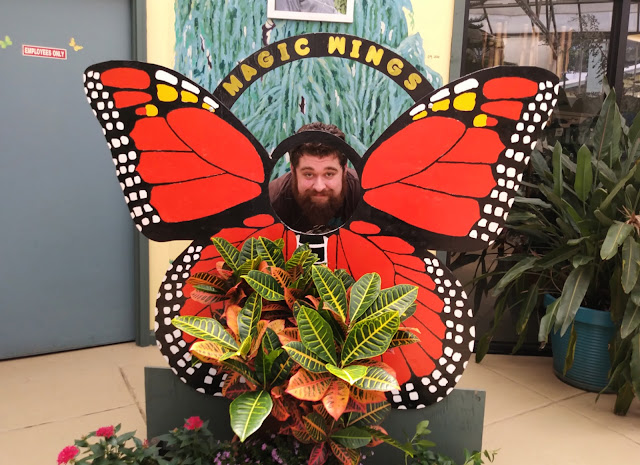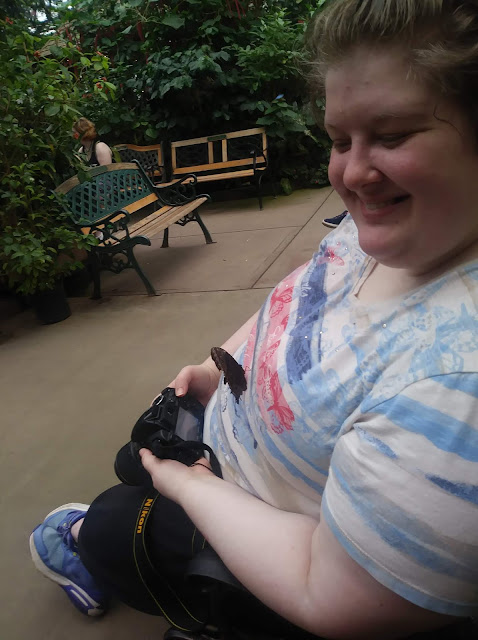This gorgeous blue butterfly is known as the Brenton Blue.
They are native to South Africa and are sadly a critically endangered species.
They are native to South Africa and are sadly a critically endangered species.
The species were actually thought to have completely died out in the 1980s, but a small colony was located in 1991 within the Eastern Cape Province of South Africa
The outer wings of a Brenton Blue.
I think this flowering plant is a trumpet vine.
A few Longwing butterflies. These butterflies are distributed throughout South America and the southern United States. These little guys have the remarkable ability to feed on pollen and through a biological process turn that pollen into a cyanide poison.
This bright colored insect is a Malaysian stick insect, officially known as the Malaysian Jungle Nymph. The bright colors indicate that this one is a female. Her name is Lola!
This is a Senegal Parrot. They can be found in West Africa and are a popular pet. This little guy in particular was adopted from a pet rescue by the Conservatory.
I love the clash of these bright orchids against the duller colors of this Owl Butterfly. I think the patterns on the wings are gorgeous!
A beautiful male Cairns Birdwing. These guys can sport a wing size of up to 4.9 inches while females get up to 5.9 inches.
These beauties are native to Australia
They love to hang out in wet tropical areas and near the coastline, feeding from Hibiscus flowers.
These butterflies do not have to worry too much about being eaten because as a larvae they feed on bitterwort. This makes the adult butterfly not palatable.
These butterflies were quite abundant at the conservatory so I was able to capture many photos
A Dwarf Crow butterfly. Under sunlight these butterflies have a purple iridescence to their wings
With a diet consisting of nectar, rotting fruit, dead animals, and bat dung, this butterfly is pretty much a stray dog that'll eat anything in the butterfly family!
A Blue-tongued Skink. I believe this lizard was also adopted from a rescue. Common in Australia, these reptiles have vibrant blue tongues and are nicknamed "Blueys" down under.
Another member of the Longwing family
Longwings have an unusually long lifespan if raised in captivity due to an abundance of food and the safety of being able to sip nectar and eat pollen in safety.
Longwings are also known for sleeping together, sometimes roosting along an entire branch all in a row. It can take about an hour for a group to settle down and rest together.
The appropriately named "Barber's Brush" tree blossom
A Malabar Tree Nymph. These guys can be found in parts of India. They have a very fluttery and weak flight pattern and tend to glide around.
A stunning True Cattleheart. The white patch on the wing seems to indicate that this one is female.
They can be found throughout the Americas
More Longwings! The striped one is known as a Zebra Lonwing and the other with the visible flash of blue is a Sarah Longwing
Another Sarah Longwing towards the right.
A Glasswing
I hope you all enjoyed these photos and the little splashes of info I learned about them. Identifying the butterflies in the pictures is what took me so long to post them!I probably spent about 6 hours in total editing and another two hours just trying to identify them!
Which butterfly doyou like the most from my photos? As gorgeous as the Brenton Blue is I think the Longwings are just too fascinating not to love!
Love, Rebecca
🦋
Pin It Now!








































































